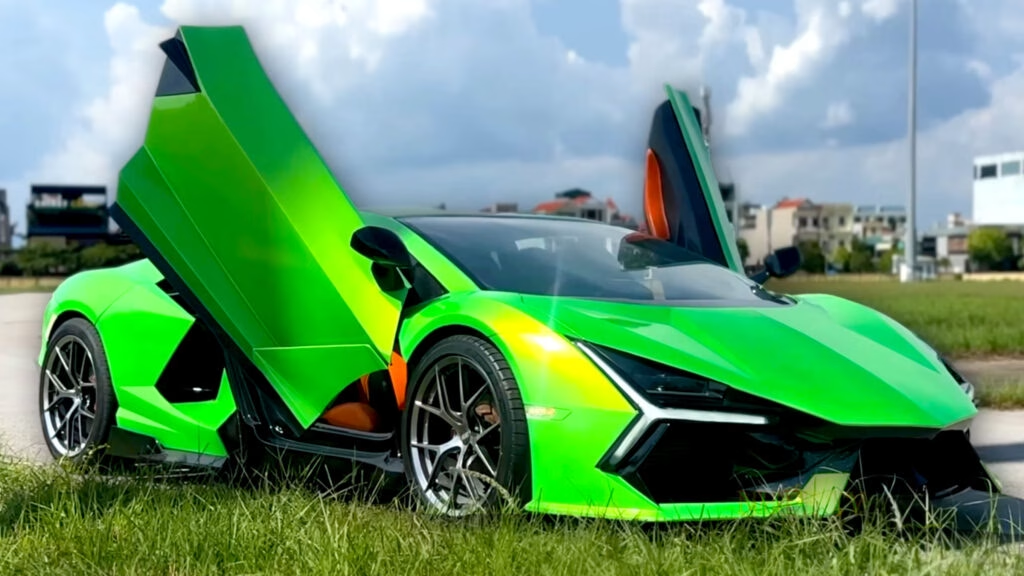How Did a Junkyard Nissan Become a Lamborghini Revuelto Replica?
Imagine taking a tired old sedan from the 1990s—a Nissan Cefiro, better known to many as the Maxima—and transforming it into a head-turning Lamborghini Revuelto replica. Sounds like something out of a car enthusiast’s fever dream, right? Yet that’s exactly what the inventive crew at NHET TV, a Vietnamese YouTube channel, managed to pull off. Their process is a masterclass in resourcefulness and craftsmanship, and the results are nothing short of jaw-dropping.
What Makes This Build Different From Other Supercar Replicas?
Let’s be honest: most homemade supercar replicas tend to fall into the “close, but not quite” category. You’ve probably seen those attempts—awkward proportions, questionable panel gaps, and a general sense that something’s just a bit off. This project, though, is in a league of its own. Instead of slapping fiberglass panels onto an old chassis, the NHET TV team started by stripping the Nissan down to its V6 engine and then building everything else from scratch. No shortcuts. No pre-fab kits. Just old-school, hands-on fabrication.
The team hand-cut and welded a custom steel frame, echoing the Revuelto’s aggressive stance. Then came the real artistry: shaping the bodywork. They used sheet metal to rough out the basic forms, then applied clay to sculpt every curve and crease to perfection. Only after the clay model was flawless did they lay down fiberglass, creating body panels that mimic the real Lamborghini’s lines with uncanny accuracy.
How Did They Achieve Such Realistic Details?
Here’s where things get wild. The process wasn’t just about the exterior. The interior got the same meticulous treatment. Clay was used to shape the dashboard and transmission tunnel, followed by fiberglass to lock in those details. Even the suspension components were custom-built and integrated into the steel chassis, ensuring that the car wasn’t just a static showpiece but a fully functional machine.
The attention to detail is staggering. The finished replica even features a deployable rear wing, just like the real Revuelto. From a distance—and honestly, even up close in photos—it’s easy to imagine this car rolling out of a high-end Italian factory rather than a modest Vietnamese workshop.
Why Use a 1990s Nissan as the Donor Car?
You might wonder why the team chose a decades-old Nissan as their starting point. The answer is simple: availability and reliability. The Cefiro/Maxima platform is known for its robust V6 engine and straightforward mechanicals. In many parts of Asia, these cars are plentiful and cheap, making them the perfect blank canvas for ambitious projects. Plus, using a donor car that’s well past its prime gives new life to something that might otherwise end up as scrap metal. Talk about upcycling on a grand scale.
What Does This Project Say About DIY Car Culture?
If you’ve ever doubted the power of DIY ingenuity, this build will change your mind. The NHET TV team has a history of tackling wild projects—Bugatti Chiron, Lamborghini Aventador SVJ, Ferrari LaFerrari, Pagani Huayra, and even a Koenigsegg Jesko, all painstakingly recreated by hand. Their approach is refreshingly analog in an age of 3D printers and CNC machines. Every weld, every sculpted panel, every fiberglass mold is the result of human hands and creative problem-solving.
This kind of work isn’t just about copying a supercar’s looks. It’s about mastering techniques—metalworking, clay modeling, fiberglass fabrication—that are as much art as science. The result? A car that doesn’t just look the part, but tells a story of perseverance, skill, and passion.
How Convincing Is the Final Product?
Let’s cut to the chase: the finished Revuelto replica is shockingly convincing. Even seasoned car enthusiasts would have to do a double-take. The proportions, the stance, the details—they’re all there. Sure, the underpinnings are still Nissan at heart, but you’d be hard-pressed to spot the difference unless you popped the hood. And for a fraction of the cost of the real thing, that’s a pretty sweet deal.
The project also highlights a broader trend: the democratization of automotive dreams. Not everyone can afford a million-dollar supercar, but with enough skill and determination, you can build something that captures the spirit—and the look—of automotive royalty.
What Can We Learn From This Kind of Ambitious Build?
There’s a lesson here that goes beyond cars. It’s about what’s possible when you combine creativity with hard work. The NHET TV team didn’t have access to exotic materials or high-tech tools. What they did have was vision, patience, and a willingness to learn by doing. That’s a blueprint anyone can follow, whether you’re building cars, furniture, or even a business.
The big takeaway? Chasing your dream project isn’t about perfection—it’s about smarter adjustments. Start with one change this week, and you’ll likely spot the difference by month’s end.

